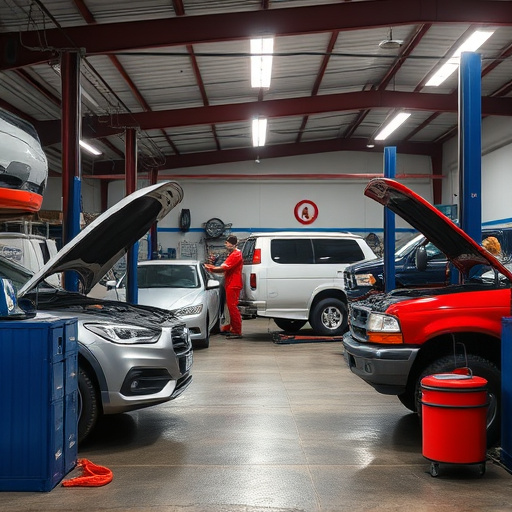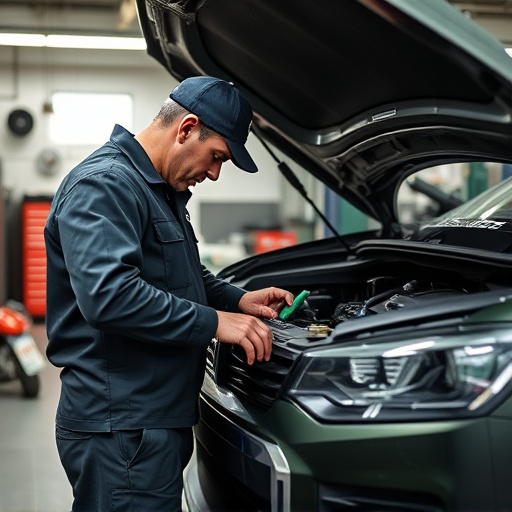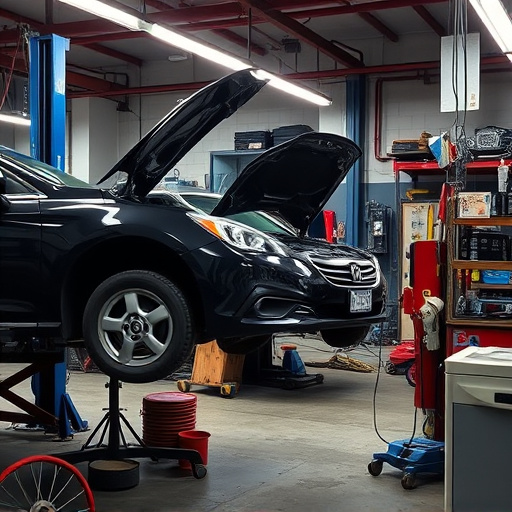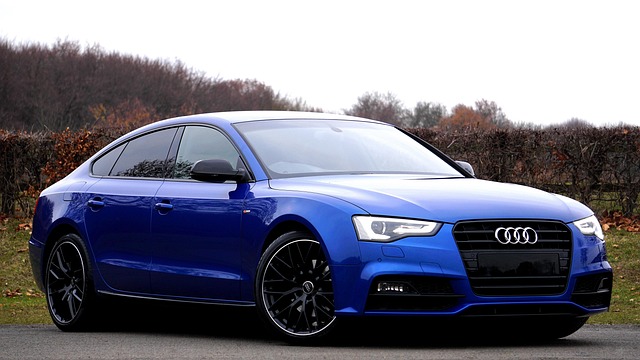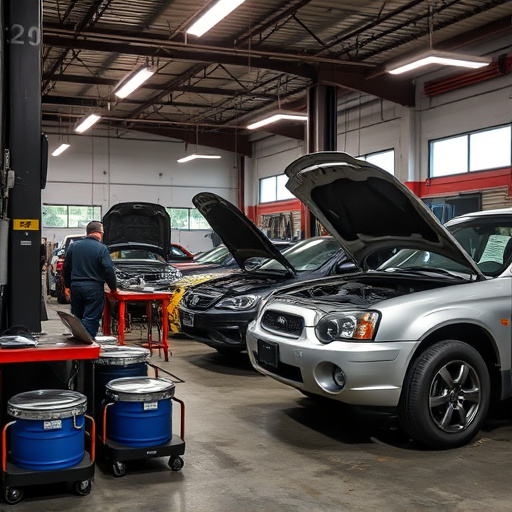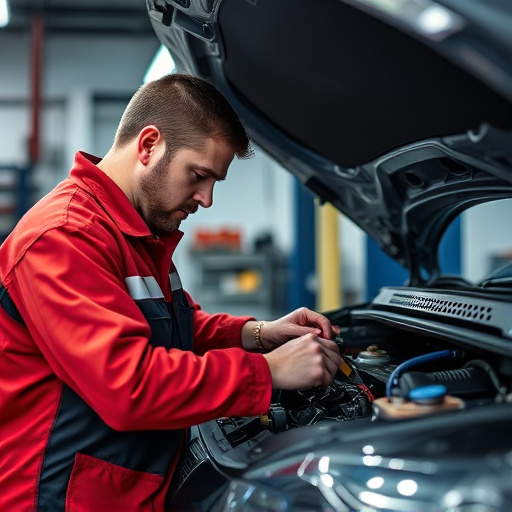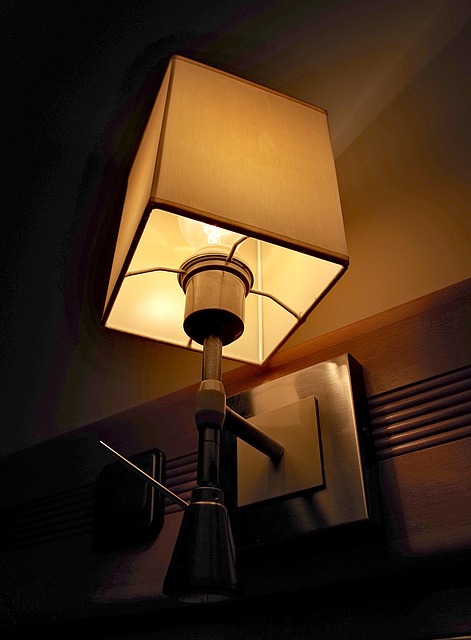Tesla PPF (paint protection film) repair is crucial for preserving vehicle aesthetics and value after minor collisions. The clear, durable polymer safeguards paintwork from scratches, chips, and dents, minimizing damage during impacts. Repairs focus on cleaning, removing damaged film, patching or replacing the protective layer, and smoothing for a seamless finish using specialized tools. Evaluating surface scuffs, scratches, and underlying panel damage is essential, with adherence to manufacturer guidelines for optimal results.
“In the world of Tesla ownership, maintaining that pristine, showroom shine is paramount. This is where Tesla’s Paint Protection Film (PPF) plays a pivotal role, offering a durable barrier against environmental aggressors. However, minor collisions can cause unsightly chips or scratches.
This article guides you through the process of efficiently repairing your Tesla PPF after such events, ensuring your vehicle retains its protective layer and glossy appearance. From understanding PPF’s benefits to mastering repair techniques, we’ve got you covered.”
- Understanding Tesla PPF: Its Role and Benefits
- Assessing Minor Collision Damage on PPF
- Step-by-Step Guide to Efficient PPF Repair
Understanding Tesla PPF: Its Role and Benefits
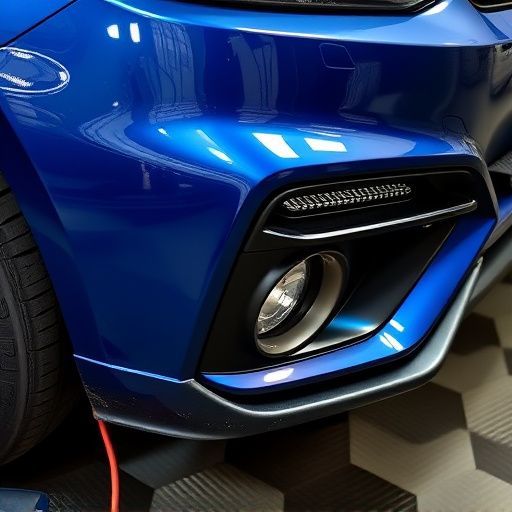
Tesla PPF, or Paint Protection Film, is a clear, durable polymer that acts as an extra layer of protection for your vehicle’s paintwork. It’s designed to resist scratches, chips, and minor dents, preserving the car’s original finish. By covering the paint surface, it not only enhances the aesthetic appeal but also increases the overall lifespan of the paint job, making it a valuable asset for Tesla owners.
The benefits of Tesla PPF extend beyond aesthetics. In the event of a minor collision or accidental dent, PPF can act as a buffer, reducing the severity of damage to the underlying paint. This means that what might otherwise be a costly repair or a new paint job can often be as simple as a quick tire service and PPF repair, leaving your Tesla looking as good as new with minimal disruption.
Assessing Minor Collision Damage on PPF
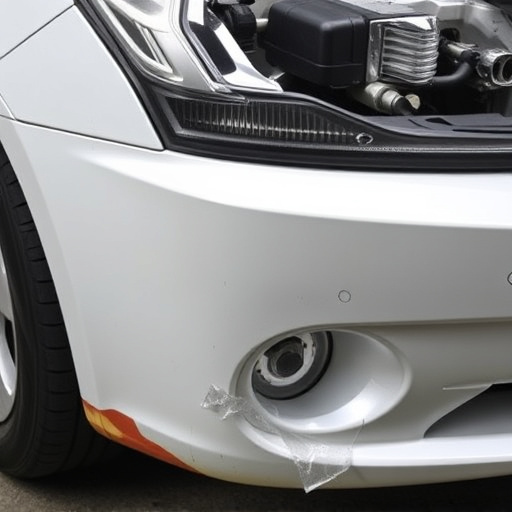
After a minor collision, assessing the damage to Tesla’s Paint Protection Film (PPF) is crucial for effective and efficient repair. PPF is designed to shield the vehicle’s paintwork from chips, scratches, and other environmental hazards, so any impact that disturbs this protective layer needs to be addressed promptly. Inspect the film for signs of cracking, tearing, or bulging—even small imperfections can compromise its integrity.
In comparison to traditional automotive repair, such as mercedes benz repair or vehicle bodywork restoration, PPF repairs require specialized tools and techniques. The process involves cleaning the affected area, carefully removing the damaged portion of the film, applying a patch or reinstituting the original protective layer, and then meticulously smoothing it for a seamless finish. This meticulous approach ensures that the Tesla’s pristine appearance is maintained while enhancing its resale value.
Step-by-Step Guide to Efficient PPF Repair
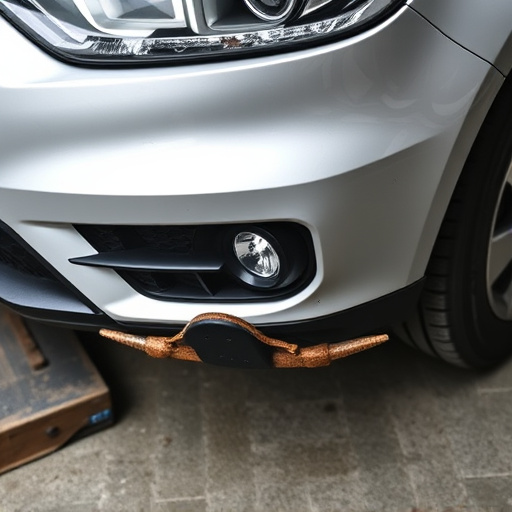
Repairs for Tesla PPF (paint protection film) following a minor collision or fender bender can be done efficiently with this step-by-step guide. Begin by evaluating the extent of damage to the PPF and surrounding vehicle body repair areas, if any. Ensure the surface is clean and free from debris; a meticulous preparation stage is key for seamless adhesion of replacement film.
Next, carefully remove the damaged section of PPF using specialized tools designed for this task. Once the old film is removed, inspect the underlying panel for any additional damage. Light scuffs or scratches can often be addressed with dedicated compound and polish, but deeper impacts may necessitate a trip to a collision center for more extensive vehicle body repair. After ensuring the area is ready, apply a fresh layer of PPF, following the manufacturer’s guidelines for optimal results.
Tesla’s Paint Protection Film (PPF) is a valuable asset for maintaining vehicle aesthetics, and efficient repair after minor collisions ensures its longevity. By understanding the material’s role, assessing damage accurately, and following a structured repair guide, owners can restore their PPF to its protective and sleek condition. This process not only conserves the car’s resale value but also showcases the importance of prompt action in maintaining this defensive layer against environmental hazards.
